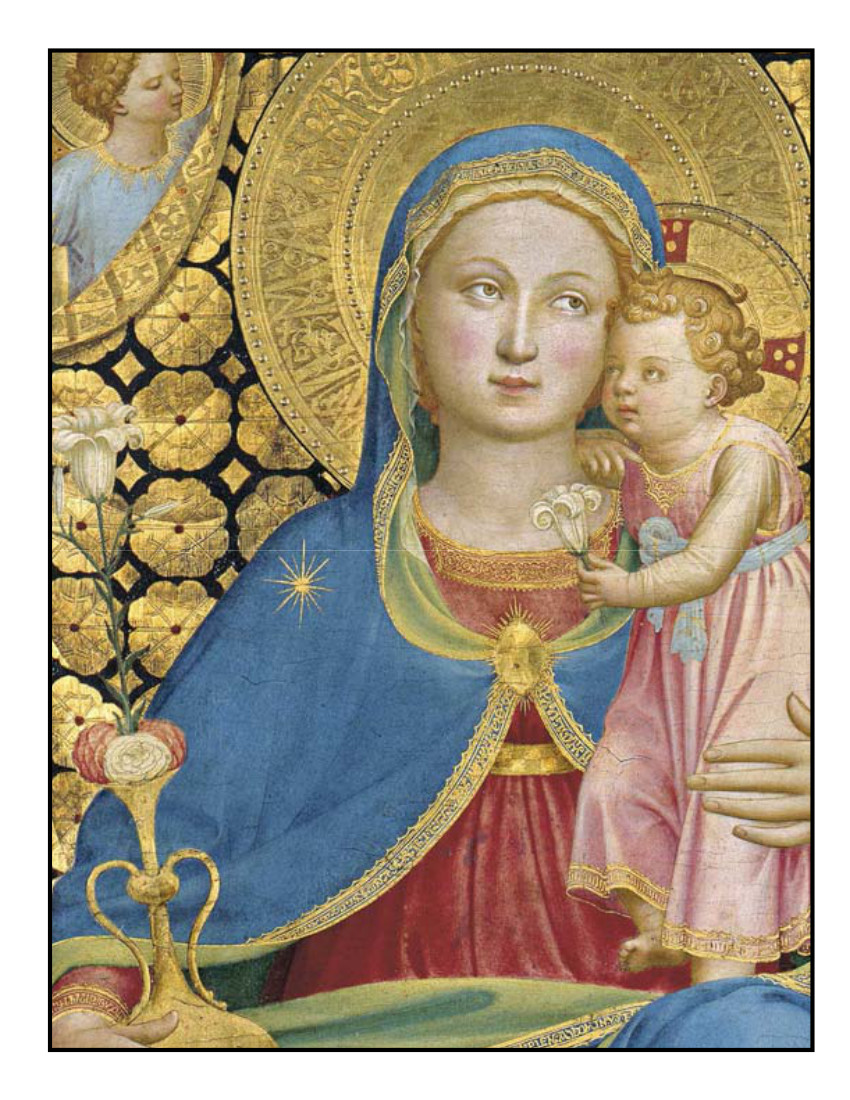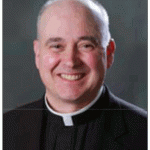
(Pastor’s Note from the Mary Immaculate of Lourdes Parish Bulletin for December 20, 2015)
After the “Our Father”, the “Hail Mary” is the most the familiar prayer to us as Catholics, so familiar that we take it for granted that the prayer has always existed as we say it now. This, however, is not so. The elaboration of the Angel Gabriel’s greeting to Mary at the Annunciation, “Hail [Mary], full of grace, the Lord is with thee: blessed art thou among women,” into a full fledged prayer of petition, “Holy Mary, Mother of God, pray for us sinners, now and at the hour of our death. Amen,” came out of the life of the Church. It was not until the Roman Breviary issued in 1568 (following the Council of Trent) that the Catholic Church gave official recognition to the form of the Ave Maria known so well to us.
It is a prayer in three parts. 1) Gabriel’s greeting (Luke 1:28), 2) St. Elizabeth’s greeting to Mary, “And blessed is the fruit of thy womb [Jesus]” (Luke 1:42), and 3) The Church’s prayer of petition.
In explaining the Church’s addition of the prayer of petition to the greeting of Our Lady the Catechism of the Council of Trent states the following:
Most rightly has the Holy Church of God added to this thanksgiving, petition also and the invocation of the most holy Mother of God, thereby implying that we should piously and suppliantly have recourse to her in order that by her intercession she may reconcile God with us sinners and obtain for us the blessings which we need both for this present life and for the life which has no end.
In searching for the origins of the Hail Mary in the first millennium of the Church we find it in the growth of personal devotion to the Mother of God among the faithful. It is not until the turn of the millennium, however, that we have evidence of the devotional formula clearly being used by Catholics. For example, Abbot Baldwin, a Cistercian monk who became the Archbishop of Canterbury in 1184, wrote of the Ave Maria:
To this salutation of the Angel, by which we daily greet the Most Blessed Virgin, with such devotion as we may, we are accustomed to add the words, ‘and blessed is the fruit of thy womb,’ by which clause Elizabeth at a later time, on hearing the Virgin’s salutation to her, caught up and completed, as it were, the Angel’s words, saying: ‘Blessed art thou among women and blessed is the fruit of thy womb.’
Since the Ave Maria was a solemn greeting of an august personage, in these centuries people said it with a gesture of reverence, for example, bending the knee in genuflection. It is recorded of King St. Louis of France (13th Century): “Without counting his other prayers the holy King knelt down each evening fifty times and each time he stood upright then knelt again and repeated slowly an Ave Maria.” The Dominican nun St. Margaret (+1292), daughter of the King of Hungary, outdid St. Louis: on certain days she recited the Ave Maria a thousand times with a thousand prostrations.
The final prayer of petition close to the one in use now appears to have come out of Italy in the later part of the 15th Century, although there was a great variability in the wording of a final prayer of petition to the Ave Maria in the various languages of Catholic Europe. Until the 1568 Breviary, the Hail Mary officially ended with, “…and blessed is the fruit of thy womb Jesus.”*
*Source: “Hail Mary”, Catholic Encylopedia, Volume VII, 1910 edition.
